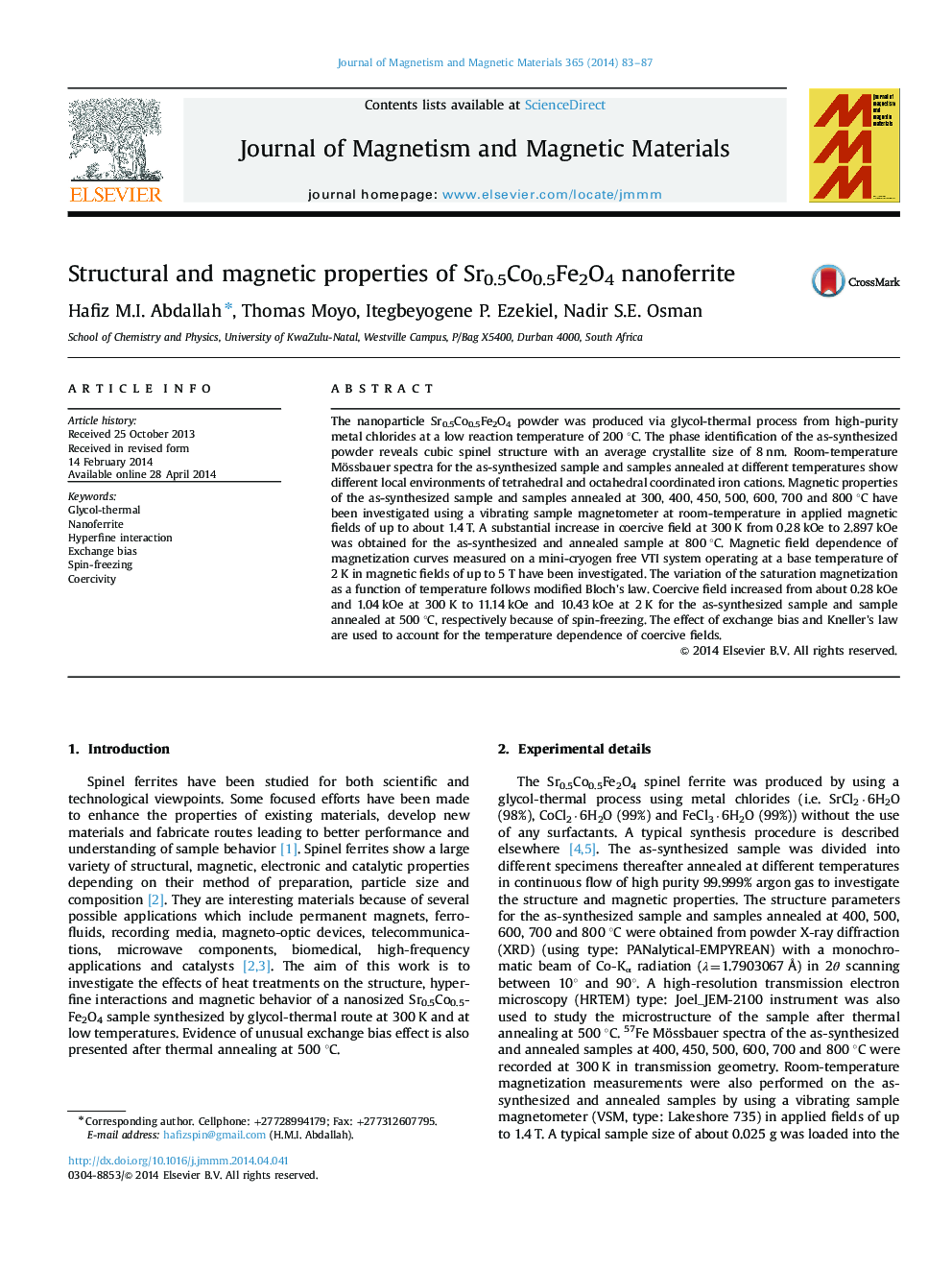| کد مقاله | کد نشریه | سال انتشار | مقاله انگلیسی | نسخه تمام متن |
|---|---|---|---|---|
| 1799682 | 1524856 | 2014 | 5 صفحه PDF | دانلود رایگان |

• Single-phase of Sr0.5Co0.5Fe2O4 was investigated using XRD and HRTEM.
• The hyperfine interactions and distributions of Fe3+ ions are deduced.
• VSMs were used for magnetization measurements from 2 K to 300 K.
• Kneller׳s law and modified Bloch׳s law were applied in the studies.
• Evidence of exchange bias (core/shell nanoparticle) has been investigated.
The nanoparticle Sr0.5Co0.5Fe2O4 powder was produced via glycol-thermal process from high-purity metal chlorides at a low reaction temperature of 200 °C. The phase identification of the as-synthesized powder reveals cubic spinel structure with an average crystallite size of 8 nm. Room-temperature Mössbauer spectra for the as-synthesized sample and samples annealed at different temperatures show different local environments of tetrahedral and octahedral coordinated iron cations. Magnetic properties of the as-synthesized sample and samples annealed at 300, 400, 450, 500, 600, 700 and 800 °C have been investigated using a vibrating sample magnetometer at room-temperature in applied magnetic fields of up to about 1.4 T. A substantial increase in coercive field at 300 K from 0.28 kOe to 2.897 kOe was obtained for the as-synthesized and annealed sample at 800 °C. Magnetic field dependence of magnetization curves measured on a mini-cryogen free VTI system operating at a base temperature of 2 K in magnetic fields of up to 5 T have been investigated. The variation of the saturation magnetization as a function of temperature follows modified Bloch׳s law. Coercive field increased from about 0.28 kOe and 1.04 kOe at 300 K to 11.14 kOe and 10.43 kOe at 2 K for the as-synthesized sample and sample annealed at 500 °C, respectively because of spin-freezing. The effect of exchange bias and Kneller׳s law are used to account for the temperature dependence of coercive fields.
Journal: Journal of Magnetism and Magnetic Materials - Volume 365, September 2014, Pages 83–87